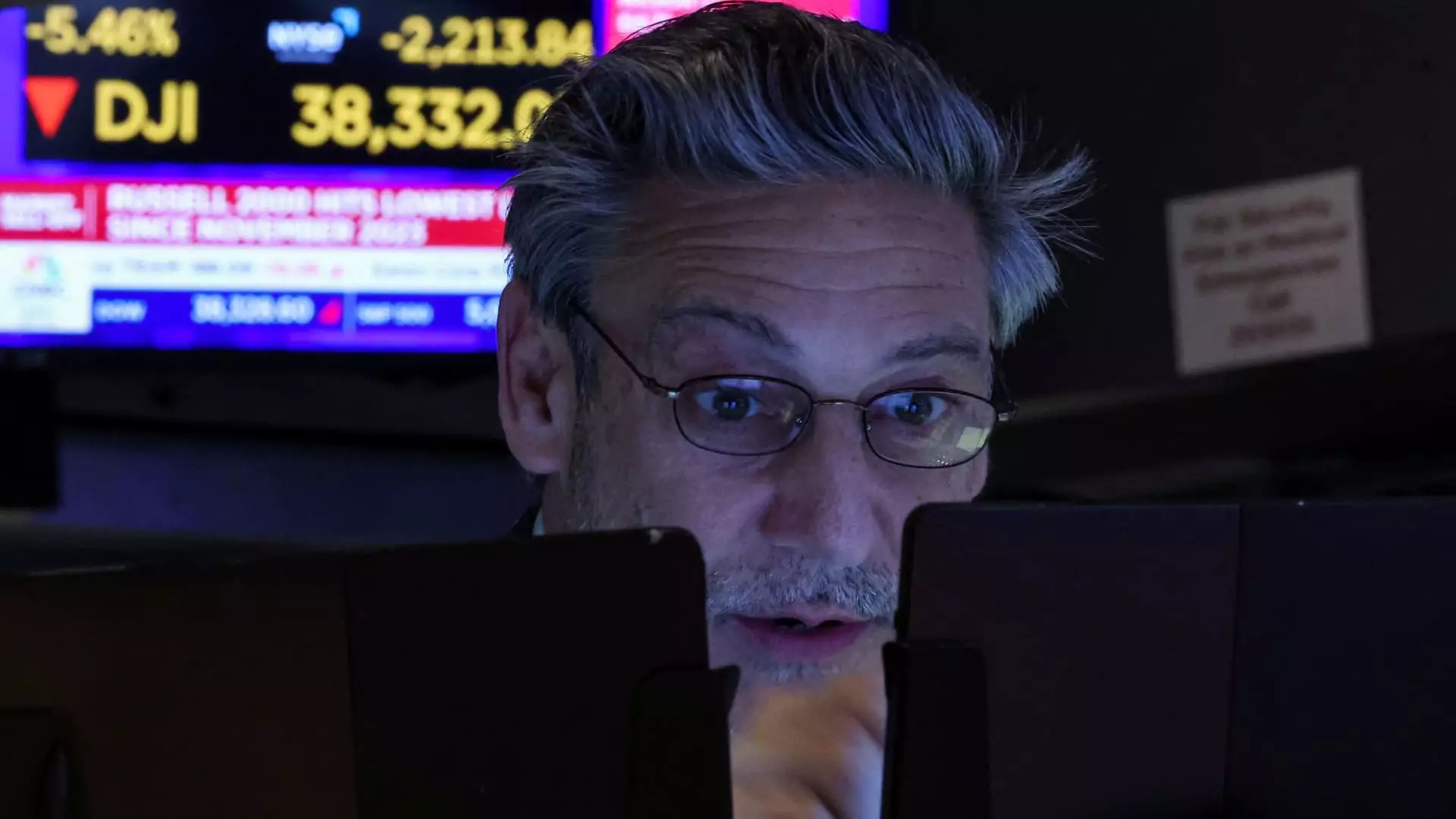The financial markets are frequently heralded as vibrant ecosystems fueled by commerce, investor speculation, and economic indicators. However, when turbulence strikes, the reaction is invariably intense. In just one tumultuous week, markets have presented a shock to many investors, reminding us that substantial financial turmoil can erupt rapidly. With trading halts now being reconsidered as essential mechanisms to mitigate freefall, the events leading up to this decision deserve scrutiny from every investor and analyst alike.
The modern trading system, characterized by its incessant pace, is rumored to be resilient yet remains vulnerable during seismic changes. The recent plummeting of stock prices sparked by a cacophony of geopolitical upheaval and domestic policies should serve not just as a warning but as a symbol of the urgent need for a revised approach in how we react to disruptive events. In March 2020, the Covid-19 pandemic awakened a slumbering beast—the unchecked volatility that can easily morph into a full-blown market crisis. Now, as we revisit similar scenarios driven by rising tariffs under the Trump administration, the lesson is clear: we must be prepared for an environment governed by unpredictability.
Rising Trade Tensions and Their Consequences
Fast-forward to present-day market conditions, where trade tensions are igniting fear among investors. Tariffs have escalated, creating a ripple effect that has many businesses reevaluating their forecasts and laying the groundwork for contraction. The impact of these top-down economic policies is not relegated to mere discussions in corporate boardrooms; they materialize in daily price fluctuations, investor sentiment, and ultimately the health of stock indices.
Furthermore, the recently proposed tariffs by the U.S. government have been met with skepticism in various sectors, particularly among small-cap companies that significantly rely on trade partnerships. As Russell 2000 futures ignited fears by touching critical thresholds, the repercussions were felt across the board. The volatility of this index has prompted alarm bells that implore investors to reconsider their portfolios’ resilience before the next potential downturn occurs.
Why Circuit Breakers Are Essential Yet Insufficient
Circuit breakers are designed to prevent excessive market crashes, shielding investors from their own impulsive reactions. Yet, the implementation of these trading halts also reveals a chilling reality—if trading is halted, the panic hasn’t been addressed but merely postponed. When the S&P 500 tumbles, as it recently did, these circuit breakers temporarily mask a much larger issue at hand.
The thresholds set for intervention—7%, 13%, and 20%—have become benchmarks that illustrate our reactive nature rather than proactive strategies. While a Level 1 trigger halts trading for a mere 15 minutes, one must ponder whether this band-aid solution adequately addresses the deeper institutional weaknesses causing investors to flee in droves.
As seen in recent crashes, every circuit breaker activation confirms that investors are not just responding to tangible market shifts, but are also ensnared by their psychological tendencies. Fear feeds on itself; with each downturn, anxiety grows, leading to further triggers of panic and liquidity crises.
Learning from the Past: Cultivating Stability
With the S&P 500 flirting dangerously close to historic lows, it’s time for a culture shift among investors. Relying solely on circuit breakers and temporary trading halts may not be the answer for sustainable investment practices. Instead, we need to prioritize resilience and adaptability, equipping investors with education and awareness that transcends fleeting market trends.
The idea that markets will always recover can be dangerous. Investors must continuously hone their instincts and strategies for difficult times rather than simply weathering the storm. The current market landscape serves as a potent reminder that vigilance, education, and preparedness are essential for navigating such turbulent waters.
As we venture into an unpredictable financial future, it is clear that the past will inform the strategies we use today. The urgency is palpable; the time for active engagement and informed risk management is now. Investors must approach their evaluations with a clearer lens, prepared for whatever challenges lie ahead, rather than merely being reactive players in a fickle market.

Leave a Reply